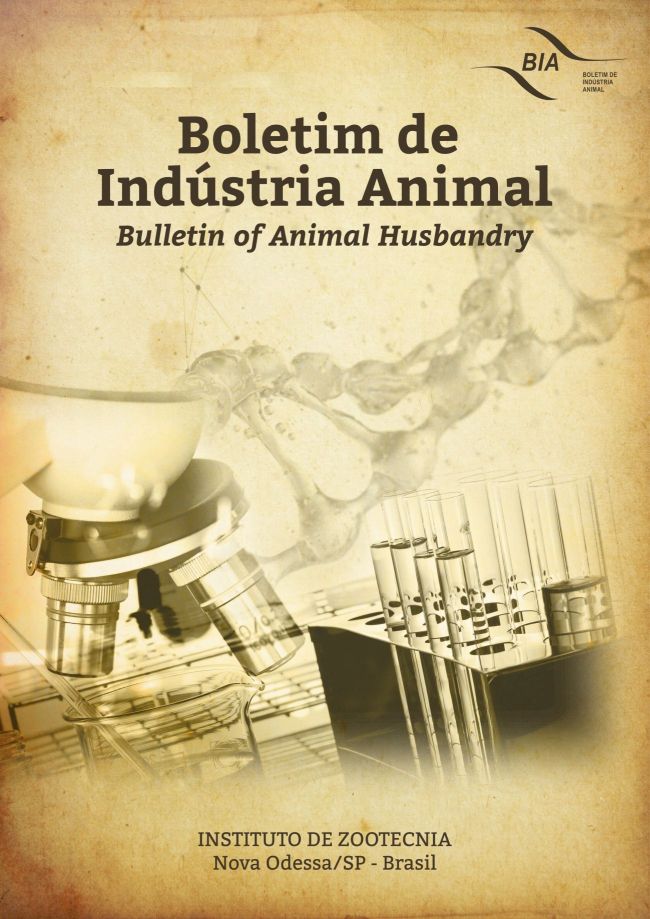Structure and Productivity of Mavuno Grass Subject to Different N:K Ratios
Palavras-chave:
Fertilization, Forage production, Urochloa brizanthaResumo
Fertilization of pastures has increased the level of animal performance due to the greater supply and higher quality of forage. One of the best known functions of potassium is regulating the opening and closing of stomata, which are responsible for gas exchange and photorespiration of the plant. Nitrogen (N) participates in the composition of proteins, amino acids and enzymes responsible for metabolic reactions. The objective of this study was to evaluate the structural and productive characteristics of Mavuno grass (Urochloa brizantha) subjected to fertilization with different N:K ratios. The experiment was carried out in a greenhouse at the experimental farm of Igarapé-açu, belonging to Federal Rural University of Amazônia. The experimental design was completely randomized, with six treatments, corresponding to nitrogen (urea) and potassium (potassium chloride) ratios, respectively, of 0:0; 75:0; 0:75; 75:75; 150:75; 300:150 kg of nutrient ha, with five replications, totaling 30 experimental units (pots). The soil used was collected in the top layer (0-20 cm). Its acidity was corrected and it was air dried and sieved through 2 mm mesh. Each pot received 10 kg of soil. The experiment had two evaluation cycles of 28 days each. To evaluate the final leaf size (FLS), the size of all mature leaves of three marked tillers was measured with a ruler, while the number of live leaves (NLL) was obtained by counting leaves of the same tillers. At the end of each cycle, the average height of the plants was measured and the tiller count in each pot was recorded to obtain the tiller population density (TPD). In addition, the forage mass was collected above a residue (stubble) of 20 cm. This material was weighed and subsequently separated into leaf blades (LB), stems (S) and dead material (DM) to calculate the percentage of each component. The material was dried in a forced-air oven at 65 °C until reaching constant weight. From this, the dry mass production of the aerial part (DMPAP) was obtained. The NLL had an effect (P<0.01), with the highest value for the 0:0 ratio and the lowest for the 0:75, 150:75 and 300:150 ratios. In addition, there also was an effect on MSPA per pot (P<0.01), where the ratio of 75:75 showed approximately 60% greater MSPA than 0:0. This can be explained by the nitrogen fertilization, which increased the production of dry mass of forage. The N:K ratios had an effect on DPP (P<0.01), with the highest density in the 300:150 ratio and the lowest in the 0:0 and 75:0 ratio. In addition, there was also an effect on the PMSPA per pot (P<0.01), where the ratio of 75:75 showed approximately 60% higher PMSPA than 0:0. The %MM was also influenced by the fertilization ratios (P<0.01), where a higher %MM was observed for the 300:150 ratio and the lowest for the 0:0 ratio. As for the variables of leaf size (FLS), height, %LF and %S, no effect of N:K fertilization was observed (P>0.05). The population density of tillers increased according to the increasing doses of N:K. This result can mainly be attributed to the presence of nitrogen, since it stimulates the development of the aerial part of grass, which produce more tillers under favorable growth conditions. The N:K ratios in the maintenance fertilization of Mavuno grass changed the structural and productive characteristics, since the application of only one of these nutrients did not change the plants€™ growth.
Downloads
Downloads
Publicado
Edição
Seção
Licença
Os autores não serão remunerados pela publicação de trabalhos, pois devem abrir mão de seus direitos autorais em favor deste periódico. Por outro lado, os autores ficam autorizados a publicar seus artigos, simultaneamente, em repositórios da instituição de sua origem, desde que citada a fonte da publicação original seja Boletim de Indústria Animal. A revista se reserva o direito de efetuar, nos originais, alterações de ordem normativa, ortográfica e gramatical, com vistas a manter o padrão culto da língua e a credibilidade do veículo. Respeitará, no entanto, o estilo de escrever dos autores. Alterações, correções ou sugestões de ordem conceitual serão encaminhadas aos autores, quando necessário. Nesses casos, os artigos, depois de adequados, deverão ser submetidos a nova apreciação. As opiniões emitidas pelos autores dos artigos são de sua exclusiva responsabilidade. Todo o conteúdo deste periódico, exceto onde está identificado, está licenciado sob a Licença Creative Commons Attribution (CC-BY-NC). A condição BY implica que os licenciados podem copiar, distribuir, exibir e executar a obra e fazer trabalhos derivados com base em que só se dão o autor ou licenciante os créditos na forma especificada por estes. A cláusula NC significa que os licenciados podem copiar, distribuir, exibir e executar a obra e fazer trabalhos derivados com base apenas para fins não comerciais.













